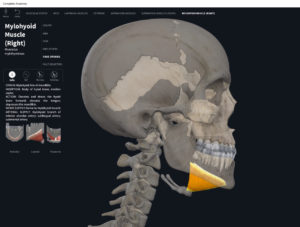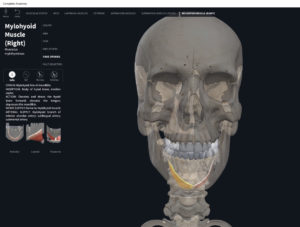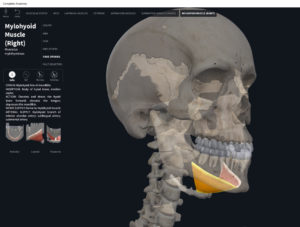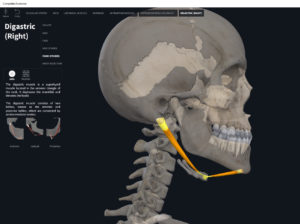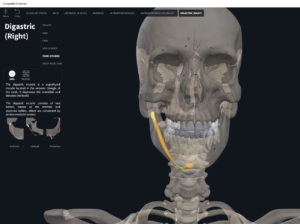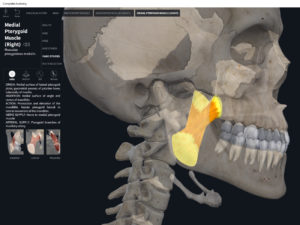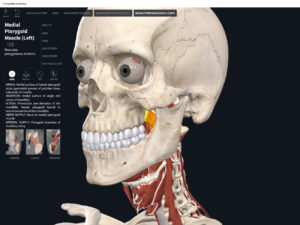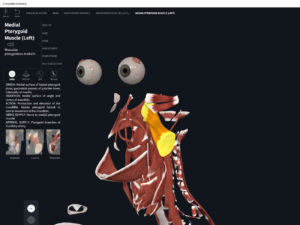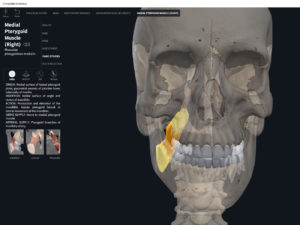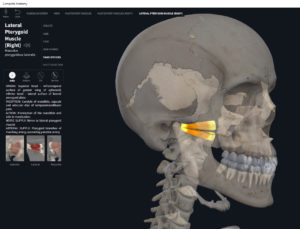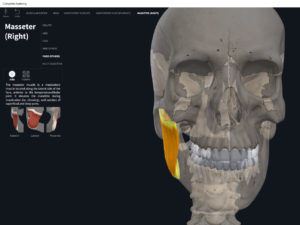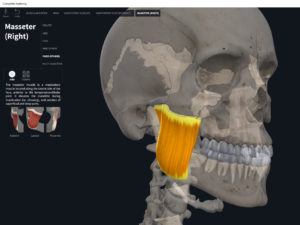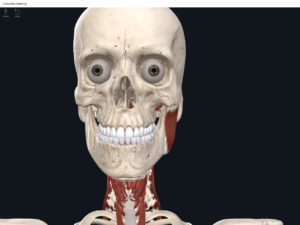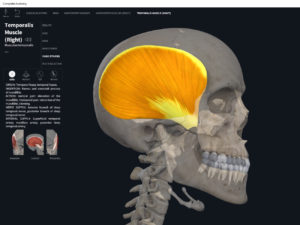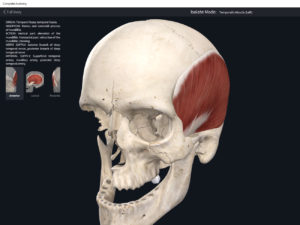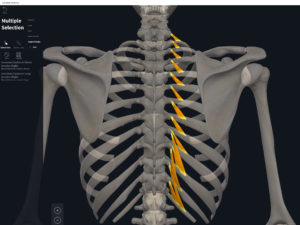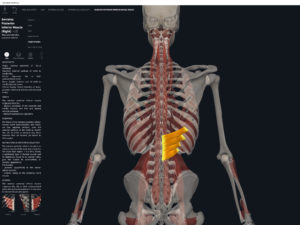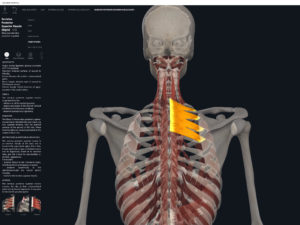Anatomy & Physiology: Muscles—Mylohyoid.
Structure.
- Origin: inner mandibular surface.
- Insertion: body of hyoid.
Function.
- Concentric action: elevates and hyoid and floor of mouth; depresses mandible; head/neck flexion.
- Reverse mover action: elevate hyoid.
- Eccentric action: controls/restrains/slows elevation of mandible, head/neck extension, depression of hyoid.
- Isometric action: stabilizes mandible and hyoid.
- Innervation: mandibular division of trigeminal V nerve.
- Arterial supply: inferior alveolar artery.
Clinical Significance.
More.
References
Biel, A. (2015). Trail guide to the body: A hands-on guide to locating muscles, bones and more.
Cedars-Sinai. (2018). Vertebrae of the spine. Retrieved from https://www.cedars-sinai.org/health-library/diseases-and-conditions/v/vertebrae-of-the-spine.html
Clark, M., Lucett, S., Sutton, B. G., & National Academy of Sports Medicine. (2014). NASM essentials of corrective exercise training. Burlington, MA: Jones & Bartlett Learning.
Jenkins, G., & Tortora, G. J. (2012). Anatomy and Physiology: From Science to Life, 3rd Edition International Stu. John Wiley & Sons.
Muscolino, J. E. (2017). The muscular system manual: The skeletal muscles of the human body.
